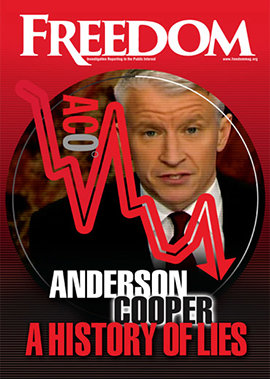Is it the psychotherapist who might prescribe and administer electroconvulsive therapy (ECT)?
Is it the company that manufactures and sells ECT equipment?
Or is it, in fact, the patient who should have the final say in their own treatment?
Companies such as Somatics, LLC have hidden for nearly 60 years behind the learned intermediary doctrine—a defense doctrine that holds that a company, often a pharmaceutical or medical device company, can ignore informing patients of the dangers of their products as long as they warn the patient’s doctor, the “learned intermediary.”
Remarkably, the patient may never be told just how severe the damage resulting from ECT is, depriving them of their right to make decisions about their own body and well-being.
In an argument in a 2022 lawsuit filed against Somatics, the Los Angeles-based law firm Wisner Baum argued, “The underlying issue to be addressed in this case is whether California law continues to respect patient self-decision and autonomy, or have we come to a point where the law holds the ultimate consent of the patient to be irrelevant and the only thing that matters is a doctor’s decision to administer a risky procedure to a patient without regard to the patient’s ultimate consent?
“[We contend] that California law has deteriorated to such a point.”
Conceding the point, the California Supreme Court, in a historic decision on June 20, ruled that patients are not irrelevant when it comes to making decisions about their own medical treatment.
1,000 deaths are attributed to ECT every year.
In other words, patients have the final option to say no. The patient has the final word.
The court held that “the learned intermediary doctrine does not allow healthcare professionals to substitute their judgment for that of their patients.”
When it comes to ECT—a dangerous procedure exposed in the 1975 film One Flew Over the Cuckoo’s Nest, based on the 1962 Ken Kesey novel—patients are largely unprotected by government regulations. Because, basically, there have been none.
The various devices, including the Somatics Thymatron IV ECT device, deliver a powerful electric current to the patient’s brain, one-fifth as strong as that delivered to a condemned murderer in an electric chair—an appalling 400 times the amount of current required to cause damage to brain cells.
That is enough to induce a seizure of the brain similar to a grand mal seizure—known to create brain damage and sometimes death.
In fact, 1,000 deaths are attributed to ECT every year.
Perhaps this harm factor is why the FDA granted only a “clearance” to Somatics to market the Thymatron, and not a full “approval,” which requires lengthy and thorough human trial testing to establish parameters of safety and efficacy. The granting of “clearance” is a loophole that can have dangerous, even deadly, consequences.
Exhibit A: When 25-year-old Michelle Himes sought treatment for her depression from Dr. Raymond Fidaleo in 2011, Fidaleo, the federal government, and especially Somatics, did not have her back.
She was on her own during the 26 ECT treatments she underwent from April 2011 to January 2012. Neither Himes nor Fidaleo knew the danger she was facing—Somatics did not publish warnings of the possibility of profound memory loss and permanent brain damage until 2018.
But when her treatments were completed, Himes was suffering from permanent brain damage, amnesia and dementia. Her brain, basically, had been fried.
Wisner Baum noted, “Somatics, LLC failed to disclose to her physician that the device could cause permanent brain damage, severe permanent amnesia and acute and/or chronic organic brain syndrome—side effects she eventually suffered.”
In 2017, Himes filed a lawsuit against Somatics—a lawsuit that directly challenged the “learned intermediary defense” relied upon by Somatics.
Himes’ attorneys argued that, “had Somatics warned about brain damage and permanent memory loss, Himes’ doctor would have altered his conduct and relayed those warnings to Himes and, had Himes been so warned, she would have refused ECT.”
The informed consent rule requires that physicians disclose the risks of their prescribed treatment, the risks of not undergoing that treatment and the probability of success of that treatment. After such disclosure, it is “reserved to the patient alone” to weigh the risks against the patient’s own “fears and hopes” in deciding whether to undergo the recommended treatment, said the Supreme Court of California in its June decision.
Somatics argued that “the patient’s own decision as to whether to accept the recommended treatment was irrelevant since ordinary patients cannot evaluate technical data, might actually object to treatment beneficial to them and generally rely on their doctor’s medical expertise when deciding on a particular course of treatment,” Wisner Baum cited.
In other words, shut up and take your medicine.
The court, on the contrary, found that an “objectively prudent person in the patient’s position” may well decide to decline a doctor’s recommended treatments and should have the right to do so.
The court’s decision opens the door to patients’ ability to sue companies such as Somatics for the damage they cause and eliminates some of the undue protection such companies have enjoyed under the “learned intermediary defense.”
Himes’ legal defense team stated, “As a result of her multiple exposures to ECT, Himes sustained serious cognitive and memory issues, including having long ‘blacked out’ periods of her past, having trouble formulating long-term memories and struggling with reading, retaining basic information and formulating words.”
Somatics has not argued, nor has it established, that her physician was already aware of the risk of permanent memory loss and brain injury associated with the Somatics ECT machine, Wisner Baum noted.
“To the contrary, Dr. Fidaleo’s testimony establishes he was not aware of these risks, and had he been warned of these risks by Somatics, he would have altered his conduct by relaying those risks to his patients, including Himes,” Himes’ attorney stated.
Himes’ attorney also stated, “This court should conclude that when a device manufacturer fails to warn the intermediary, then the manufacturer loses the protections afforded by the learned intermediary defense, the manufacturer may not point to any conduct of the doctor to absolve itself of its own negligence and an injured plaintiff may meet her causation burden by establishing that, had she been warned of the true risks of the device by her doctor or the manufacturer, she would not have consented to the medical procedure.”
That’s precisely what the court ruled.
It’s a decision Nobel Prize-winning author Ernest Hemingway would have applauded had it occurred before his ECT sessions in 1960 and 1961, about which he wrote: “What is the sense of ruining my head and erasing my memory, which is my capital, and putting me out of business? It was a brilliant cure, but we lost the patient.”
Hemingway died by suicide in July 1961.






















